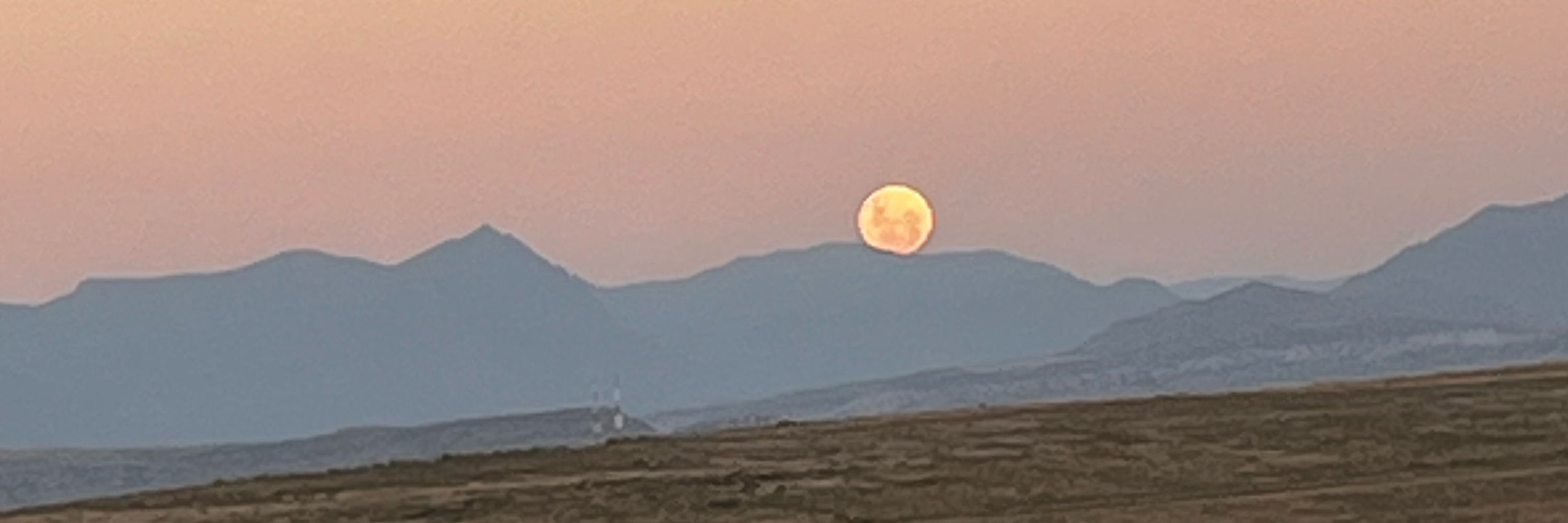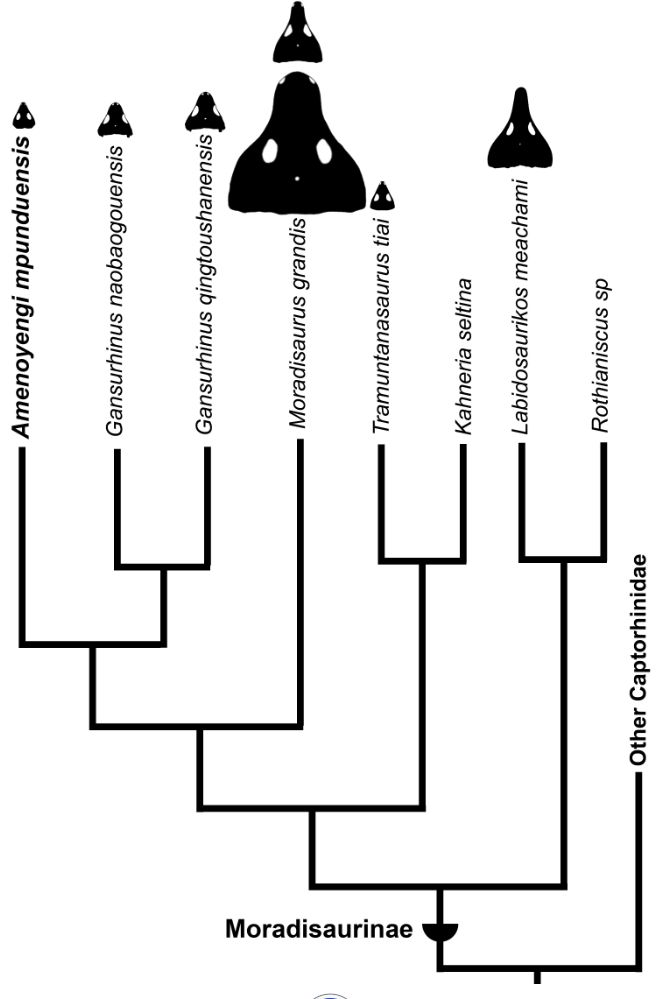
Xavier Jenkins
@semifossorial.bsky.social
Paleontologist | NSF EAR Postdoctoral Fellow @AMNH | PhD @ ISU | Reptile origins, sensory evolution, and all things Permian 🦎🐢🐊
Reposted by Xavier Jenkins
DR. TSOGTBAATAR FUNDRAISER: gofund.me/c8d8d1ab7

Donate to Help Dr. Tsogtbaatar, Icon of Mongolian Paleontology, organized by Lindsay Zanno
Renowned Mongolian paleontologist Dr. Khishigjav Tsogtbaatar is fig… Lindsay Zanno needs your support for Help Dr. Tsogtbaatar, Icon of Mongolian Paleontology
gofund.me
October 8, 2025 at 1:19 AM
DR. TSOGTBAATAR FUNDRAISER: gofund.me/c8d8d1ab7
Keep an eye out for an incoming paper by @valentinbuffa.bsky.social that better investigates the postcranial evolution of these reptiles and their relatives (:
August 28, 2025 at 12:23 PM
Keep an eye out for an incoming paper by @valentinbuffa.bsky.social that better investigates the postcranial evolution of these reptiles and their relatives (:
So what's next? I am expanding this phylogenetic dataset to better tackle the explosive radiation of early neodiapsids in the late Permian and crown reptiles in the Triassic. I also hope to detail some of our observations on synapsid evolution soon!
And, it goes without saying...more descriptions!
And, it goes without saying...more descriptions!
August 28, 2025 at 12:23 PM
So what's next? I am expanding this phylogenetic dataset to better tackle the explosive radiation of early neodiapsids in the late Permian and crown reptiles in the Triassic. I also hope to detail some of our observations on synapsid evolution soon!
And, it goes without saying...more descriptions!
And, it goes without saying...more descriptions!
Specifically, by placing 'the earliest reptile' Hylonomus on the amniote stem and removing a ~50 million and ~30 million year ghost lineage for Millerettidae and Neodiapsida, we greatly improve the stratigraphic record of early reptiles and amniotes more broadly!


August 28, 2025 at 12:23 PM
Specifically, by placing 'the earliest reptile' Hylonomus on the amniote stem and removing a ~50 million and ~30 million year ghost lineage for Millerettidae and Neodiapsida, we greatly improve the stratigraphic record of early reptiles and amniotes more broadly!
We found that this topology greatly improves the fit of the reptile evolutionary tree to the stratigraphic record by at least 27% compared to studies finding a 'Eureptilia' or 'Parareptilia'...
August 28, 2025 at 12:23 PM
We found that this topology greatly improves the fit of the reptile evolutionary tree to the stratigraphic record by at least 27% compared to studies finding a 'Eureptilia' or 'Parareptilia'...
Beyond anatomical and statistical support, how does our phylogenetic hypothesis match the fossil record for early reptiles? To test this, we performed a series of stratigraphic fit analyses...
August 28, 2025 at 12:22 PM
Beyond anatomical and statistical support, how does our phylogenetic hypothesis match the fossil record for early reptiles? To test this, we performed a series of stratigraphic fit analyses...
With our new data, millerettids are most parsimoniously interpreted as close relatives of neodiapsids even when the monophyly of clades such as 'Diapsida', 'Eureptilia', and 'Parareptilia' are enforced...

August 28, 2025 at 12:22 PM
With our new data, millerettids are most parsimoniously interpreted as close relatives of neodiapsids even when the monophyly of clades such as 'Diapsida', 'Eureptilia', and 'Parareptilia' are enforced...
We (and our reviewers) were also genuinely curious as to how robust our phylogenetic hypothesis for Millerettidae was compared to traditional frameworks of early reptile evolution, so we performed a series of constraint analyses...
August 28, 2025 at 12:22 PM
We (and our reviewers) were also genuinely curious as to how robust our phylogenetic hypothesis for Millerettidae was compared to traditional frameworks of early reptile evolution, so we performed a series of constraint analyses...
Millerettids and neodiapsids also share several derived features involved in the reorganization of the gastralia and caudofemoralis musculature. Parapleurotans are the only Paleozoic reptiles with a midline gastral element and fused, laterally directed caudal ribs, for example.

August 28, 2025 at 12:22 PM
Millerettids and neodiapsids also share several derived features involved in the reorganization of the gastralia and caudofemoralis musculature. Parapleurotans are the only Paleozoic reptiles with a midline gastral element and fused, laterally directed caudal ribs, for example.
Our ancestral state reconstruction supports a middle Permian origin of the reptile tympanum, Future work on non-saurian neodiapsids will shed light on this question, but I'll note that a tympanum was recently described in tangasaurids....

August 28, 2025 at 12:22 PM
Our ancestral state reconstruction supports a middle Permian origin of the reptile tympanum, Future work on non-saurian neodiapsids will shed light on this question, but I'll note that a tympanum was recently described in tangasaurids....
In fact, we suggest that the tympanum of modern reptiles originated in the common ancestor of Parapleurota in the middle Permian. Excitingly, recent developmental work by Bronzati et al. has shown that the modern reptile tympanum was present in their common ancestor, congruent with this hypothesis

August 28, 2025 at 12:22 PM
In fact, we suggest that the tympanum of modern reptiles originated in the common ancestor of Parapleurota in the middle Permian. Excitingly, recent developmental work by Bronzati et al. has shown that the modern reptile tympanum was present in their common ancestor, congruent with this hypothesis
We name this clade Parapleurota, which is currently supported by 21 unambiguous synapomorphies across the skeleton. These include numerous features related to a reorganization of the middle ear and cranial nerves.....


August 28, 2025 at 12:22 PM
We name this clade Parapleurota, which is currently supported by 21 unambiguous synapomorphies across the skeleton. These include numerous features related to a reorganization of the middle ear and cranial nerves.....
When these observations were incorporated into an expanded phylogenetic analysis (647 characters, the largest such study on early reptile origins), we find Millerettidae in a crownward position as sister to Neodiapsida, a group of reptiles which includes modern reptiles and their closest relatives.

August 28, 2025 at 12:22 PM
When these observations were incorporated into an expanded phylogenetic analysis (647 characters, the largest such study on early reptile origins), we find Millerettidae in a crownward position as sister to Neodiapsida, a group of reptiles which includes modern reptiles and their closest relatives.
Perhaps not so surprisingly, these 'eureptiles' were generally considered stem amniotes in pre-cladistic works. More specifically, they were thought to have 'given rise' or were 'directly ancestral' to all other amniote. This includes Hylonomus, the putative 'earliest reptile'...
August 28, 2025 at 12:22 PM
Perhaps not so surprisingly, these 'eureptiles' were generally considered stem amniotes in pre-cladistic works. More specifically, they were thought to have 'given rise' or were 'directly ancestral' to all other amniote. This includes Hylonomus, the putative 'earliest reptile'...
I carefully checked for these features in numerous other Carboniferous and Permian stem reptiles. Surprisingly, derived features millerettids shared with modern reptiles were absent in nearly all early 'eureptiles' such as captorhinids and protorothyridids.
August 28, 2025 at 12:22 PM
I carefully checked for these features in numerous other Carboniferous and Permian stem reptiles. Surprisingly, derived features millerettids shared with modern reptiles were absent in nearly all early 'eureptiles' such as captorhinids and protorothyridids.
Looking at their anatomy, I quickly realized that millerettids shared more features with neodiapsid reptiles, particularly in their braincase and postcranial skeleton.
August 28, 2025 at 12:22 PM
Looking at their anatomy, I quickly realized that millerettids shared more features with neodiapsid reptiles, particularly in their braincase and postcranial skeleton.
During my dissertation, my research focused on the Millerettidae, a group that was classically interpreted as 'eosuchians' or close relatives of modern reptiles. Despite this, millerettids have been interpreted as among the basalmost members of Parareptilia for the last few decades 🤔


August 28, 2025 at 12:22 PM
During my dissertation, my research focused on the Millerettidae, a group that was classically interpreted as 'eosuchians' or close relatives of modern reptiles. Despite this, millerettids have been interpreted as among the basalmost members of Parareptilia for the last few decades 🤔
Since the advent of cladistics, reptiles have generally been split into 'eureptiles' and 'parareptiles'. This early dichotomy in the evolution of reptiles has implied long ghost lineages for numerous reptile groups, conflicting with more traditional hypotheses of reptile origins by Romer and Watson

August 28, 2025 at 12:22 PM
Since the advent of cladistics, reptiles have generally been split into 'eureptiles' and 'parareptiles'. This early dichotomy in the evolution of reptiles has implied long ghost lineages for numerous reptile groups, conflicting with more traditional hypotheses of reptile origins by Romer and Watson
To be formally published soon, with a detailed thread to follow there
August 22, 2025 at 1:33 PM
To be formally published soon, with a detailed thread to follow there
Reposted by Xavier Jenkins
And I named one of them!!! Meet Aulacephalodon kapoliwacela - the Iron Hog - the first and so far only geikiid known from the Luangwa Basin! I worked on this taxon for my Master's thesis, and it's been lovely


August 7, 2025 at 3:05 PM
And I named one of them!!! Meet Aulacephalodon kapoliwacela - the Iron Hog - the first and so far only geikiid known from the Luangwa Basin! I worked on this taxon for my Master's thesis, and it's been lovely
This was a really exciting project thanks to my PhD advisor @gondwannabe.bsky.social and mentors Jonah Choiniere and Claire Browning, who helped with our study of Permian amniote material across Southern Africa. More to come!
August 7, 2025 at 5:13 PM
This was a really exciting project thanks to my PhD advisor @gondwannabe.bsky.social and mentors Jonah Choiniere and Claire Browning, who helped with our study of Permian amniote material across Southern Africa. More to come!
Cladistic analysis demonstrates that Amenoyengi forms a group with other late-surving and small-bodied moradisaurines. Was there a trend towards smaller body-size late in captorhinid evolution, or are there other biogeographical variables at play? #Captorhinidae #captorhinid

August 7, 2025 at 5:13 PM
Cladistic analysis demonstrates that Amenoyengi forms a group with other late-surving and small-bodied moradisaurines. Was there a trend towards smaller body-size late in captorhinid evolution, or are there other biogeographical variables at play? #Captorhinidae #captorhinid
Collected in the 1960s, this specimen was interpreted as an unnamed species of Captorhinus (an older taxon from North America) for decades. CT-scanning at Wits University has revealed the presence of multiple rows of dentition similar to moradisaurines, including those from Niger and India.

August 7, 2025 at 5:13 PM
Collected in the 1960s, this specimen was interpreted as an unnamed species of Captorhinus (an older taxon from North America) for decades. CT-scanning at Wits University has revealed the presence of multiple rows of dentition similar to moradisaurines, including those from Niger and India.

